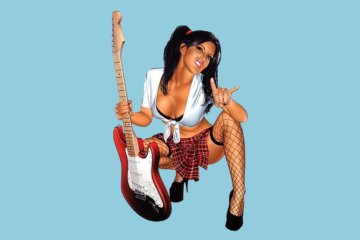There was a time when artists needed a paper canvas and several other things to create their masterpieces. In recent times, technology has provided artists with a variety of mediums and tools. This has even led to the emergence of many digital artists across the world. Such individuals use today’s digital technologies to create their works of art.
Considering the way digital arts is growing today, one can say that it is here to stay. You might be a professional artist, or an art student, or just a beginner in the digital art space. Whoever you are, there’s absolutely no reason why you must not explore digital art. Curious? Well, let’s look at a few types of digital arts you probably never knew or even heard about:
1. Algorithmic art
It is a form of generative art, created using computer algorithms. A digital artist who creates algorithmic art is called an ‘algorist’. The role of an algorist in this form of art is to create the algorithm. Once the algorithm is created, it creates the art.
Algorithms may involve computer codes, expressions, functions, or other forms of input. They can be in a mathematical, generative, or computational form. It is the choice of the artist whether to include some randomness or to go for a deterministic algorithm.
2. Datamoshing
Also called ‘glitch art’, data moshing is one of the most popular forms of digital art in today’s times. Whether you’re a hobbyist, a student, or an expert, you might’ve seen glitchy GIFs or memes. Such effects are achieved through data manipulation of media files. So, data moshing is the creation of such glitch art pieces. It is a time-consuming process and applies to animated GIFs and videos.
You can create this digital art with the help of software or use data mosh videos. One of the techniques for datamoshing video files involves the removal, replacement, or corruption of frames. Another technique is to select a certain frame and duplicate it repeatedly.
3. Fractal art
Fractal art can be considered as a sub-type of algorithmic art. Simply put, a fractal is an infinite pattern similar across various scales. In fractal art, the calculation of fractal objects is represented in the form of any of the media. In order to create this type of art, you can choose from a variety of fractal-generating software.
The fractal art thus created can also be post-processed through another software. This digital art is quite intriguing, as the same pattern is repeated, no matter how far you zoom in. Creating fractals can be challenging, as a small change in a variable can result in the butterfly effect.
4. Still imagery
Among the computer-generated digital arts, one of the most common types is 2-dimensional (2D) and 3-dimensional (3D) still images. The 2-dimensional still images are created by combining 2D geometric models, text, digital images, and other elements. To create the 2-dimensional still images, you can use Flash, Adobe Illustrator, and other software.
The 3-dimensional still images are created using 3D representations of geometric data. This data is stored for performing calculations or for rendering images. The 3D still images rely mainly on the algorithms that are used for 2-dimensional computer graphics.


